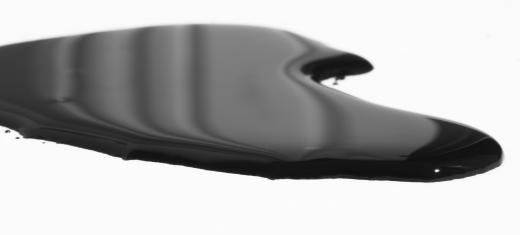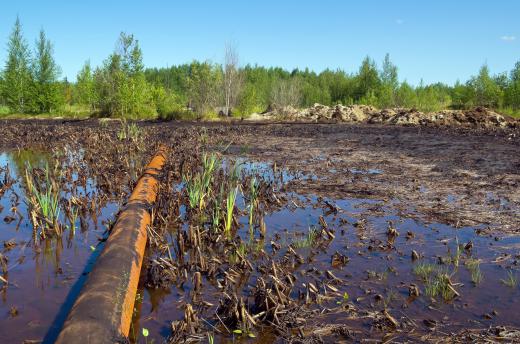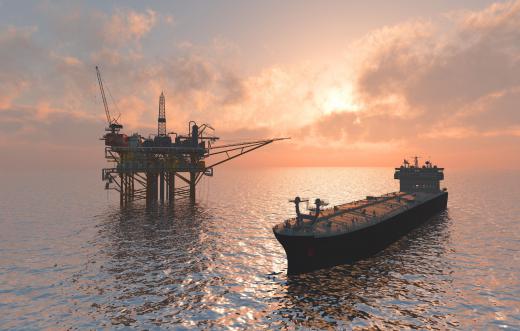Crude oil washing is a method of cleaning the storage tanks of oil tankers using crude oil as a solvent. When crude oil is shipped over long distances, layers of sediment separate from the oil and are deposited on the walls of the storage tank. In the past, this was removed using high-pressure seawater hoses, with the resulting contaminated water generally being pumped into the sea. By cleaning the storage tank walls with a high-pressure spray of crude oil, the sediments dissolve back into the liquid oil and can be pumped into onshore storage containers along with the rest of the cargo. This method has the advantage of reducing pollution and wasted cargo, and the use of crude oil washing in large oil tankers has been required by law since the late 1970s.
In its crude state, oil contains various compounds that must be removed in the refining process to create a usable product. Some of these, including waxes, tars, and sediments, tend to separate out from the liquid oil and build up on the interior walls of storage tanks. This buildup of solid material, known as clingage, can significantly reduce the capacity of storage tanks over time and can cause pumping mechanisms to clog or malfunction. As a result, clingage is generally removed from the storage tanks at the end of a voyage.

Up until the late 1960s, clingage was removed by scouring the interior walls of the storage tanks using the same high-pressure seawater pumps used to clean the decks of ships. It took a great deal of water to clean tanks in this manner, since crude oil is not water-soluble. The resulting mixture, which could contain as much as 800 tons of crude oil on a 20,000 ton tanker, was used as ballast and then pumped into the ocean some distance offshore. Due to rising concerns over the pollution caused by this method, alternatives were sought.

The method of crude oil washing came into widespread use in the early 1970s. Pumping mechanisms were devised that could produce a high-pressure stream of crude oil, which was used to spray the walls clean of clingage. Unlike seawater, the crude oil acts as a solvent and dissolves the solid petroleum sediment back into liquid oil. Instead of an unusable emulsion of water and oil, the result is cargo-grade crude oil which can be pumped ashore and sold along with the rest of the cargo.

Due to the environmental advantages of crude oil washing, it became the only legal method for cleaning the storage tanks of large oil tankers. In 1978, crude oil washing was made mandatory for all new oil tankers, and those with capacities of 20,000 tons or greater required to be built with specialized crude oil washing systems. This requirement, along with the creation of segregated ballast tanks that prevent the inter-mixture of ballast water and oil, greatly reduced the pollution associated with the international petroleum trade.
